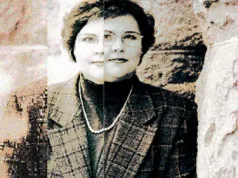The Lost in the Mall Study – fronted by esteemed psychologist Elizabeth Loftus – refers to an experiment which was undertaken to test if it is possible to implant a false memory.
In the highly-charged debate over recovered memory, this study proved interesting. For many, it is an example of how easily false memories can be created.
However, many have criticised the study for numerous reasons. It is a study which has proven as polarising as the overall topic of recovered memory.

Background
This study contributed to the overall study of Recovered Memory. Recovered Memory is a highly controversial topic.
In general, recovered memory describes the situation where a person recalls a memory that they had previously forgotten. But for many, these memories did not happen – and are actually false.
Among those that are most sceptical of recovered memory is Elizabeth Loftus – an American psychologist. Loftus has been a staunch advocate for the idea that memory is highly malleable, and susceptible to outside influences.
In an effort to prove this, Loftus came up with what would become known as the “Lost in the Mall” technique. She published her findings alongside Jim Coan and Jacqueline E. Pickrell [1].
This came at a time where recovered memory was proving to be a phenomenon. There were many reports of supposed recovered memories of past abuse, often at the hands of parents.
The Premise of the Study
Loftus and her fellow researchers aimed to show how a fictional memory could be implanted into a person’s psyche [1].
They used the example of presenting study participants with a plausible scenario from their childhood that never actually happened.
How does the Lost in the Mall technique work?
Here’s how the technique typically works:
- Selection of Participants: Participants are selected for the study.
- Initial Interview: Participants are interviewed about various events from their childhood, including both real events and events that are completely fabricated (such as being lost in a shopping mall).
- Implanting False Memory: During the interview, researchers subtly introduce the false memory by providing suggestive cues or asking leading questions. For example, they might say something like, “Can you remember a time when you were lost in a shopping mall as a child?”
- Follow-up Interviews: Participants are then interviewed again after a period of time, during which they are asked to recall the events discussed in the initial interview. They may be asked to provide details about the false memory, including where it happened, who was present, and how they felt.
- Analysis: Researchers analyze the participants’ responses to see if they have incorporated the false memory into their recollections. This can involve comparing their initial and follow-up responses, looking for consistency or inconsistencies in their accounts, and assessing the level of confidence they express in their memories.
What did the results show?
Approximately 25% of the participants in the study reported that they remembered being lost in the mall – despite it being totally fictitious [1].
Loftus concluded that just by imagining events, that false memories could be created [1]. She suggested this study was proof that memories can be implanted easily.
Other studies that have replicated this approach have also resulted in similar findings [2]. This is used as proof by many of how memories can be formed – despite not ever happening.
Criticism of the Lost in the Mall technique
However, there has been some criticism. Criticism of the Lost in the Mall technique primarily revolves around ethical concerns and methodological limitations. Here are some of the key criticisms:
- Ethical Concerns: One major criticism is the ethical issue of implanting false memories in participants’ minds. Critics argue that this could potentially cause distress or confusion for the participants, as they may have difficulty distinguishing between real and false memories. There are concerns about the potential psychological harm that could result from this manipulation of memory.
- Validity and Generalizability: Some critics argue that the technique may not accurately reflect real-life situations where false memories are formed. The artificial nature of the experimental setup, where participants are explicitly asked to recall events that never happened, may not fully capture the complexity of how false memories develop.
- Alternative Explanations: Some researchers argue that alternative explanations, such as social influence, may better account for the phenomena observed in studies using the Lost in the Mall technique. These explanations emphasize the role of memory retrieval processes and social dynamics in shaping individuals’ recollections, rather than solely focusing on memory distortion through suggestion.
Summary
While the study has attracted criticism, it has become a key part of the study of memory. This research has important implications for understanding memory distortion, eyewitness testimony, and the reliability of autobiographical memory.
Moreover, it underscores the fallibility of human memory and highlights the potential for memory manipulation through suggestion and leading questioning – making it very useful to researchers and scholars.
VISIT OUR RECOVERED MEMORY BLOG
Disclaimer
This website should be used purely for informational purposes, and does not intend to, nor should it ever, be used as a replacement for professional medical advice.
We strive to keep all of our pages updated, and ensure that our website is full of factual and in-depth information. However, we encourage you to browse this website with care.
As a reminder, this website and all content within it cannot and should not replace the advice of a trained medical professional. You can read our full disclaimer at this link.
Helplines
If you are struggling with your mental health, help is available. With the right support and treatment, you can make a recovery. For information on helplines, or if you are in a state of crisis, please visit our crisis page by clicking on the relevant link for your geographical location (United Kingdom), (United States), (International). You can also see how to get mental health treatment and the process involved by clicking this link.
References
[1] Loftus, E., Coan, J. & Pickrell, J. (1996). Manufacturing False Memories Using Bits of Reality. In: Reders, L Implicit Memory and Metacognition. New Jersey: Lawrence Erlbaum Associates. p195-221.
[2] Pezdek, K., & Hodge, D. (2003). Planting False Childhood Memories in Children: The Role of Event Plausibility. Child Development. 70 (4): p887-895.




































